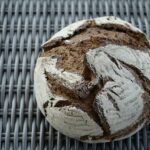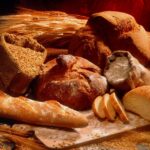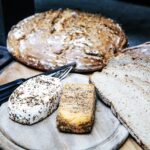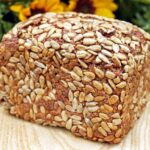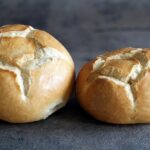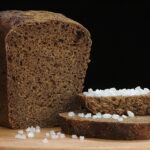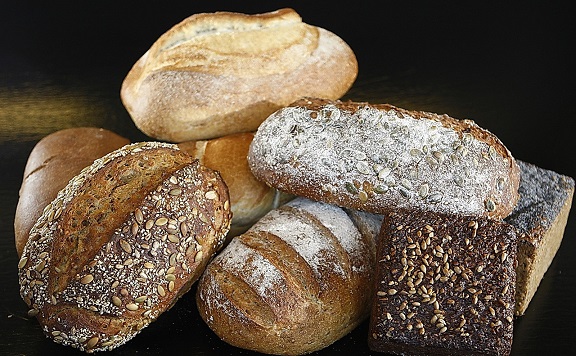
Bread in Germany isn’t just food—it’s a birthright, a ritual, a national obsession. With more than 3,200 officially recognized varieties, Germany proudly holds the title of the most diverse bread culture in the world. Whether you’re biting into a warm, crusty Brötchen at breakfast or savoring a thick slice of dense Pumpernickel at dinner, bread weaves itself into every corner of daily life. But German bread is more than a delicious staple. It’s a living piece of cultural heritage, recognized by UNESCO as an Intangible Cultural Asset.
This article will guide you through the delicious and fascinating world of German bread, from its ancient roots to the ovens of today’s regional bakeries. We’ll explore traditional loaves, baking techniques, and the breads you absolutely need to try. If you’re a cultural explorer, passionate home baker, or simply carb-curious—this journey is baked just for you.
The Origins and Evolution of German Bread
German bread has a story that predates the nation itself. As early as 800 BCE, ancient Germanic tribes were baking flatbreads using stone-ground grains like barley and spelt. The Roman Empire introduced sourdough fermentation and more advanced baking tools, but it was the Middle Ages that truly kneaded Germany’s bread culture into form.
During medieval times, bread wasn’t just sustenance—it was status. Nobility favored white wheat loaves, while peasants filled their ovens with dense rye breads like Schwarzbrot. Regional climates influenced flour choices: rye thrived in the north, while wheat and spelt flourished in the south.
The rise of guilds in the 12th century standardized baking practices and elevated breadmaking to a respected trade. Towns even developed signature loaves—like Pumpernickel in Westphalia or Bauernbrot across Bavaria.
By the 19th century, Germany’s bread culture had exploded into full bloom. Industrial milling made flour more accessible, but many bakers clung to traditional recipes and methods. Today, Germany continues to guard its bread legacy fiercely, with artisanal bakeries and sourdough starters passed down through generations.
The Many Types of German Bread
Germany’s bread diversity is unmatched in the world. Each region has its favorites, from heavy rye loaves in the north to spelt-rich breads in the south. Below are 30 of the most popular types of German bread recipes, each representing a unique flavor, history, or tradition.
1. Bauernbrot (Farmer’s Bread)
A rustic rye-wheat blend with a hearty crust and tangy sourdough flavor, found across the country.
2. Pumpernickel
A dense, dark rye bread from Westphalia, slow-baked for up to 24 hours. Iconic for its sweet, malty flavor.
3. Vollkornbrot (Whole Grain Bread)
Packed with seeds, grains, and fiber—this nutty, nutrient-dense loaf is a staple in health-conscious homes.
A broad category of rye-based breads that vary by region, often sourdough-based and strong in flavor.
Crispy on the outside, soft inside—these rolls are a daily breakfast must-have.
Twisted, golden-brown, and finished with rock salt, Bavarian pretzels are beloved worldwide.
Made with coarse rye flour and sourdough, this dense loaf is popular in northern Germany.
Mild and slightly nutty, made with spelt flour, an ancient grain with a loyal fan base.
9. Kartoffelbrot (Potato Bread)
Fluffy and moist thanks to mashed potatoes in the dough—perfect for sandwiches.
10. Krustenbrot (Crusty Bread)
A round loaf with a crackly crust and soft interior, ideal for slicing and slathering with butter.
A savory bread baked with caramelized onions—great toasted with cheese or cold cuts.
12. Mischbrot (Mixed Flour Bread)
A blend of rye and wheat flours, often mildly sour and very versatile.
13. Sesambrötchen (Sesame Rolls)
Fluffy interior with a toasted sesame seed crust, found in nearly every German bakery.
14. Mohnbrötchen (Poppy Seed Rolls)
Similar to sesame rolls but topped with poppy seeds—classic breakfast fare.
15. Kürbiskernbrot (Pumpkin Seed Bread)
Dark rye or wheat loaves with crunchy pumpkin seeds throughout.
16. Sonnenblumenbrot (Sunflower Seed Bread)
Soft and nutty, this bread is rich in sunflower seeds and pairs perfectly with fresh cheese.
17. Hefezopf (Sweet Braided Bread)
Slightly sweet and often served at Easter or Sunday brunches, sometimes with raisins or almonds.
18. Fastenbrot (Fasting Bread)
Traditionally eaten during Lent, this simple, hearty loaf is dense and lightly seasoned.
19. Früchtebrot (Fruit Bread)
A festive, dark loaf packed with dried fruits, often made around the holidays.
20. Nussbrot (Nut Bread)
A soft wheat or rye bread mixed with walnuts or hazelnuts—perfect for pairing with cheese.
21. Berliner Landbrot
A regional rye loaf with a robust sourdough tang, great with hearty stews.
22. Fladenbrot (Flatbread)
Often influenced by Turkish-German fusion, this soft, flat bread is excellent for dips or sandwiches.
23. Bierbrot (Beer Bread)
Infused with German beer for a malty, rich flavor—popular at festivals and beer gardens.
24. Rosinenbrot (Raisin Bread)
A sweet treat enjoyed at breakfast or with coffee, dotted with juicy raisins.
25. Quarkbrot (Quark Cheese Bread)
Baked with Quark (a German soft cheese), making it moist, slightly tangy, and fluffy.
26. Malzbrot (Malt Bread)
Dark and rich, made with malt extract and perfect for sweet or savory toppings.
27. Dinkelvollkornbrot (Whole Spelt Bread)
Nutty, chewy, and high in fiber—beloved by health-conscious eaters.
28. Walnussbrot (Walnut Bread)
Dense and earthy with toasted walnut pieces—perfect for cheese platters.
29. Weißbrot (White Bread)
A German take on French-style white bread, soft and mild—ideal for toasting.
30. Brot mit Kräutern (Herb Bread)
Flavored with herbs like rosemary or thyme—great with soups and stews.
Baking German Bread: Tools, Ingredients & FAQs
Essential Ingredients in Traditional German Bread
German breads are known for their heartiness and complex flavor—thanks largely to a few staple ingredients:
- Rye Flour (Roggenmehl): Used in many dark, sourdough-based loaves like Pumpernickel and Roggenbrot.
- Wheat Flour (Weizenmehl): The foundation of lighter breads like Brötchen and Weißbrot.
- Spelt Flour (Dinkelmehl): Popular in southern Germany and among those seeking ancient grains.
- Sourdough Starter (Sauerteig): Gives many German loaves their signature tang and long shelf life.
- Seeds and Grains: Sunflower, pumpkin, linseed, and oats are often baked in or sprinkled on top.
Tools of the Trade
To make authentic German bread at home, here are a few helpful tools:
- Banneton (proofing basket): Gives loaves their traditional shape and allows for airflow.
- Dutch Oven or Baking Stone: Essential for creating crusty exteriors.
- Bread Lame: For scoring the dough before baking—classic for Bauernbrot and Krustenbrot.
- Kitchen Scale: Precision matters, especially for rye-based recipes.
Where Can You Find German Bread Outside Germany?
Many German bakeries abroad, especially in the U.S., Canada, and Australia, carry classics like Vollkornbrot and Brötchen. In urban areas, look for bakeries founded by German immigrants. Farmers’ markets and European delis often stock frozen or vacuum-packed versions. Alternatively, home baking is gaining traction thanks to accessible recipes and sourdough trends.
Frequently Asked Questions (FAQ)
Q: Is German bread healthy?
Yes! Many varieties use whole grains, seeds, and sourdough fermentation, which aids digestion and adds nutritional value.
Q: Why is German bread so dense?
This comes from rye and wholegrain flours, as well as longer fermentation and minimal commercial yeast.
Q: How long does German bread last?
Sourdough and rye breads can stay fresh for 4–7 days if stored properly—longer than typical white bread.
Q: Can I freeze German bread?
Absolutely. Many breads freeze well. Slice before freezing for easy thawing.
Germany’s Breadbasket of Culture
German bread is more than a national treasure—it’s a window into centuries of craft, culture, and community. With more than 3,000 types of bread across the country, each region brings its own flavor to the table, literally. Whether you’re enjoying a slice of dense Schwarzbrot in Hamburg or a warm Laugenbrötchen in Munich, every bite connects you to something ancient and authentic.
Now that you’ve explored the diversity of German breads, why not taste it for yourself? Bake your way through tradition, try a sourdough starter, or simply support your local German bakery. Want to go deeper? We’ve got you covered.
Hungry for culture? Stay with us at GermanCulture.com.ua—where history is always fresh out of the oven.
